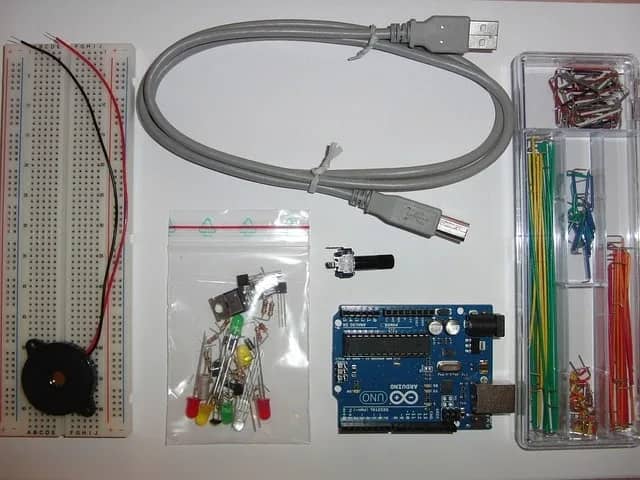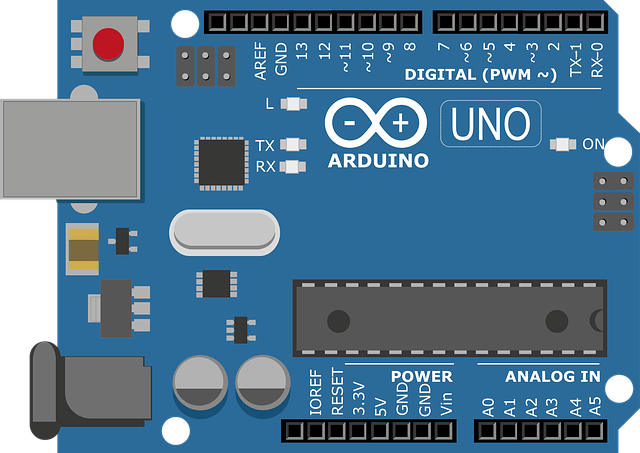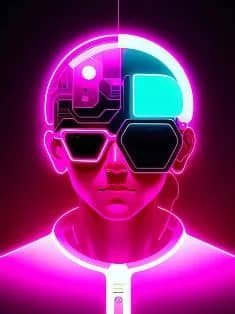Arduino: Empowering Innovation Through Open-Source Electronics
In the realm of modern technology, the open-source movement has catalyzed a wave of innovation, enabling individuals, hobbyists, and professionals to experiment and create without boundaries. Arduino, a powerful platform at the forefront of this movement, has revolutionized the way we approach electronics and programming. Born from the minds of Ivrea Interaction Design Institute students in 2003, Arduino has grown to become a cornerstone of the maker culture, democratizing access to electronics and spawning countless projects that span industries and disciplines.
The Genesis of Arduino: An Open-Source Revolution
The inception of Arduino was fueled by the idea of making electronics accessible to a wider audience. Traditional electronics development often required specialized knowledge, expensive tools, and a steep learning curve. Arduino aimed to change that by providing an open-source hardware and software platform that simplifies the process of designing and creating interactive electronic projects.
At its core, Arduino comprises two essential components: the hardware, including the microcontroller boards, and the software, which consists of the integrated development environment (IDE) used to write, compile, and upload code to the boards. This cohesive ecosystem has led to Arduino’s widespread adoption and its central role in cultivating a global community of makers and innovators.
Democratizing Electronics: Empowerment Beyond Boundaries
One of Arduino’s most significant contributions is its role in democratizing electronics. With its user-friendly interface, intuitive coding environment, and extensive online resources, Arduino has broken down barriers to entry for individuals with varying levels of technical expertise. This inclusivity has attracted artists, educators, scientists, and engineers from diverse backgrounds, fostering a collaborative environment where ideas flow freely and innovation knows no bounds.
The versatility of Arduino has enabled it to be employed in a multitude of projects spanning a wide range of domains. From creating interactive art installations to building home automation systems, from developing wearable technology to constructing robots for educational purposes, Arduino’s adaptability has catalyzed innovation across disciplines.
Open Source, Open Innovation: The Power of Community
Central to Arduino’s success is its thriving global community. Enthusiasts of all skill levels can share knowledge, seek guidance, and collaborate on projects through online forums, social media groups, and local maker spaces. This spirit of communal learning has not only accelerated the development of new projects but has also contributed to the continuous evolution of Arduino’s hardware and software offerings.
The open-source nature of Arduino has inspired countless variations and derivatives. Some of these include boards with enhanced capabilities, specialized sensors, and compatibility with different programming languages. This diversity within the ecosystem has further expanded the scope of what can be achieved using Arduino, ensuring that it remains a cutting-edge platform at the forefront of innovation.
Education and Beyond: Arduino in Academia and Industry
Arduino’s impact extends beyond hobbyist projects and into the realms of academia and industry. Its accessibility and ease of use have made it a valuable tool for teaching programming, electronics, and prototyping at educational institutions worldwide. By engaging students with hands-on projects that yield tangible results, Arduino fosters an understanding of complex concepts in an engaging and practical manner.
Moreover, Arduino’s influence can be seen in professional settings where rapid prototyping and proof of concept development are crucial. Startups and established companies alike leverage Arduino’s capabilities to quickly iterate through ideas, validate concepts, and accelerate product development cycles.
The Future of Arduino: Inspiring Tomorrow’s Innovators
As we look to the future, Arduino is poised to continue shaping the landscape of innovation. The ongoing advancements in hardware capabilities, the expansion of the Arduino ecosystem, and the integration of emerging technologies ensure that Arduino remains relevant in a rapidly evolving technological landscape.
Whether you’re an artist seeking to infuse interactivity into your work, an educator eager to engage students through hands-on learning, or an engineer aiming to prototype the next groundbreaking invention, Arduino stands as a testament to the power of open-source collaboration, enabling creativity and innovation to flourish without limitations. The story of Arduino is a reminder that great ideas can originate from anyone, anywhere, and that by democratizing access to technology, we pave the way for a brighter, more inventive future.
PARTS OF ARDUINO BOARD

An Arduino board is composed of several key components that work together to create a functional and versatile platform for electronics projects. Here are the main parts of a typical Arduino board:
- Microcontroller: This is the brain of the Arduino board, responsible for processing instructions and controlling the components connected to it. Common microcontrollers used in Arduino boards include those from the ATmega series by Microchip (formerly Atmel).
- Digital and Analog Pins: Arduino boards have multiple digital input/output (I/O) pins that can be used for connecting various components. Digital pins can be used to read or write binary signals (high or low), while analog pins can read analog voltages from sensors or other devices.
- Power Pins: These pins provide the necessary power supply to the board and external components. The most common power pins are the 5V (volts) and 3.3V pins for supplying different voltage levels. There’s also a Ground (GND) pin to complete the circuit.
- Voltage Regulator: Arduino boards usually include a voltage regulator to ensure a stable and consistent power supply to the microcontroller and other components. This helps protect the board from voltage fluctuations.
- USB Interface: The USB port allows you to connect the Arduino board to a computer for programming and power supply. This interface enables you to upload code to the microcontroller and communicate with the board.
- LEDs: Many Arduino boards have built-in LEDs that serve various purposes. For example, there might be a power LED that indicates the board is receiving power, and a built-in LED on a specific pin (often pin 13) that is commonly used for testing and debugging.
- Crystal Oscillator: To accurately track time and control operations, Arduino boards often include a crystal oscillator. This component generates a precise clock signal for the microcontroller.
- Reset Button: The reset button allows you to restart the microcontroller and begin running your code from the beginning. This is useful for debugging and testing purposes.
- Headers and Connectors: Arduino boards feature headers (usually in the form of pins or female connectors) that allow you to connect various components such as sensors, actuators, and communication modules like Wi-Fi or Bluetooth.
- Voltage Reference: Some Arduino boards have a voltage reference component that helps the analog pins measure voltages accurately, often crucial for analog sensors.
- EEPROM: Some boards include an Electrically Erasable Programmable Read-Only Memory (EEPROM) chip, which provides non-volatile memory storage that retains data even when the power is turned off. This can be useful for saving configuration settings or data.
- ICSP Header: The In-Circuit Serial Programming (ICSP) header enables advanced users to directly program the microcontroller using specialized programming tools.
These components collectively create the foundation of an Arduino board. Different Arduino models might have additional features or specific components tailored to certain applications, such as built-in Wi-Fi, Bluetooth, motor drivers, or specialized sensors. Understanding these components is crucial when designing and building projects using Arduino boards.
APPLICATOINS OF ARDUINO BOARD
Arduino boards find applications in a wide range of fields and industries due to their versatility, ease of use, and open-source nature. Here are some of the diverse applications of Arduino boards:
- Home Automation: Arduino boards can be used to create smart home systems that control lighting, heating, air conditioning, security cameras, and more. They allow homeowners to remotely monitor and control various devices through smartphones or computers.
- Robotics: Arduino boards serve as the brains of robots, enabling them to sense their environment, move, and perform tasks. From simple line-following robots to complex robotic arms, Arduino-based robotics projects are popular among hobbyists, students, and professionals.
- Wearable Technology: Arduino boards can power wearable devices such as fitness trackers, smartwatches, and health monitoring systems. They enable the collection of data from sensors and communication with other devices via Bluetooth or Wi-Fi.
- Interactive Art Installations: Artists use Arduino to create interactive and dynamic art installations that respond to inputs like motion, sound, or light. These installations engage viewers and blur the lines between technology and art.
- Education: Arduino boards are widely used in educational settings to teach electronics, programming, and problem-solving. Their hands-on nature helps students grasp abstract concepts while creating tangible projects.
- Environmental Monitoring: Arduino-based sensor networks can monitor environmental parameters like temperature, humidity, air quality, and more. This data can be collected and analyzed to gain insights into the environment and inform decision-making.
- Automotive Hacking: Ethical hackers and security researchers use Arduino boards to explore vulnerabilities in automotive systems, leading to improvements in vehicle cybersecurity.
- Agriculture: Arduino-based systems can automate and monitor agricultural processes such as irrigation, soil moisture sensing, and temperature control in greenhouses. This helps optimize crop yields and resource usage.
- IoT (Internet of Things): Arduino boards are a cornerstone of IoT projects, enabling devices to communicate and exchange data over the internet. They can be used to create smart home devices, industrial monitoring systems, and more.
- Prototyping: Professionals use Arduino boards to quickly prototype new product ideas and concepts. They help iterate through designs and test functionality before investing in larger-scale production.
- Medical Devices: Arduino boards can be integrated into medical devices for data collection, patient monitoring, and diagnostics. They have applications in telemedicine, rehabilitation, and personalized healthcare.
- Data Logging: Arduino-based data loggers can record and store data from various sensors over time. This is valuable for scientific research, environmental monitoring, and quality control.
- DIY Electronics: Hobbyists and enthusiasts use Arduino boards to build a wide variety of electronic projects, from weather stations and remote-controlled vehicles to home entertainment systems and retro gaming consoles.
- Energy Management: Arduino can help monitor and manage energy consumption in buildings, leading to energy savings and more efficient resource utilization.
- Accessibility Solutions: Arduino boards can be used to create assistive devices for people with disabilities, such as braille readers, communication aids, and mobility assistance tools.
These applications showcase the adaptability and impact of Arduino boards across various domains. The open-source nature of the platform encourages innovation, collaboration, and creative problem-solving, making Arduino a go-to choice for makers, developers, and professionals seeking to bring their ideas to life.



